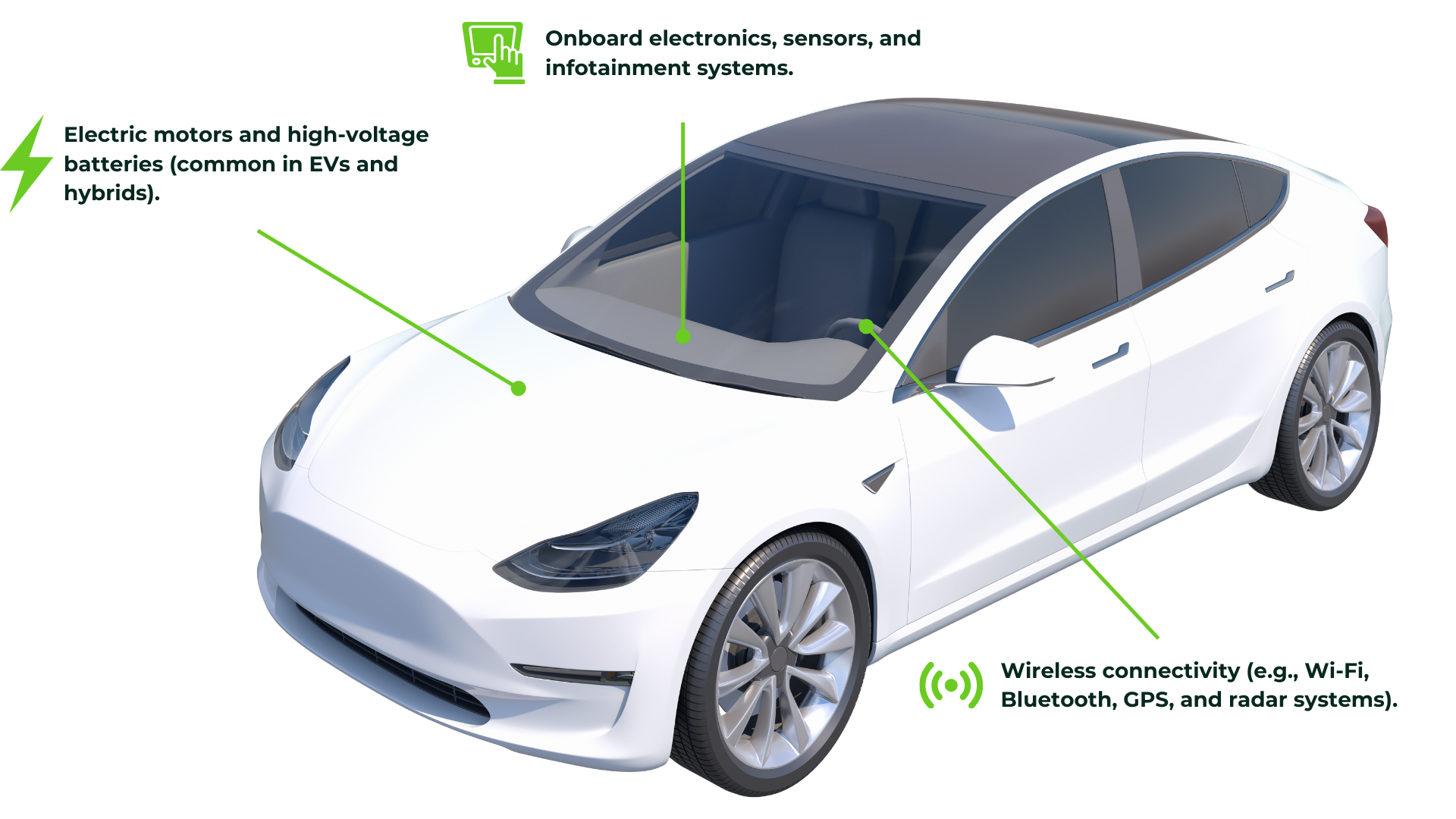Understanding EMF Exposure in Modern Vehicles
Automotive Research Project
Modern vehicles—especially electric and hybrid cars—are technological marvels that offer cleaner, more efficient transportation. However, these advancements come with an often-overlooked concern: electromagnetic fields (EMFs) generated by vehicle systems. The Automotive Research Project by EFEIA investigates EMF emissions within vehicles, assesses their potential impact on human health, and advocates for electromagnetically hygienic designs to ensure safer travel for drivers, passengers, and the environment.
An Important matter for driver's and passenges safety
Why In-Vehicle EMFs Matter
With the rise of electric vehicles (EVs), hybrid systems, and advanced electronics in cars, EMFs are becoming a growing concern. Understanding and addressing EMF emissions in vehicles is essential for ensuring driver and passenger well-being, especially for individuals with heightened sensitivity to EMFs, such as those with Electrohypersensitivity (EHS) and chronic illnesses.
EMF Sources in Modern Vehicles

Project Objectives
The Automotive Research Project focuses on three key areas to address in-vehicle EMF exposure:
Measurement and Analysis
- Identify and measure EMF sources within modern vehicles (gasoline, hybrid, and electric models).
- Analyze EMF levels under various driving conditions, such as acceleration, idling, and wireless system use.
Health Impact Assessment
- Evaluate the potential short- and long-term health effects of in-vehicle EMF exposure.
- Focus on vulnerable groups, such as frequent drivers, children, and individuals with EHS.
Promoting Electromagnetically Hygienic Vehicle Designs
- Advocate for safer automotive technologies and EMF-reduction strategies.
- Collaborate with car manufacturers, engineers, and regulators to implement shielding and design improvements.
Key Findings So Far
Ongoing research in the Automotive Research Project has uncovered several key insights:
Higher EMF Levels in EVs
Electric and hybrid vehicles often produce higher EMF levels due to high-voltage components and electric motors.
Wireless Technologies Amplify Exposure
Onboard Wi-Fi, Bluetooth, and infotainment systems increase EMF emissions, particularly in enclosed vehicle spaces.
Variability by Design
EMF levels vary widely depending on the vehicle model, system configuration, and insulation quality.
These findings highlight the need for EMF mitigation measures to protect passenger health without compromising vehicle functionality or innovation.
Project Objectives
EFEIA advocates for the following measures to reduce in-vehicle EMF exposure and promote electromagnetically hygienic transportation:
1.
2.
3.
Who Should Care About In-Vehicle EMFs?
The Automotive Research Project is designed for:
Drivers and Passengers
Learn about potential EMF exposure risks and how to mitigate them.
Automotive Manufacturers
Collaborate to design safer, electromagnetically hygienic vehicles.
Health Professionals
Understand EMF-related symptoms and provide informed guidance to affected individuals.
Individuals with EHS
Find practical solutions for safer transportation options.
Driving Toward Healthier Journeys
The Automotive Research Project provides the tools, data, and advocacy needed to promote electromagnetically hygienic vehicle solutions. Together, we can make the roads safer for everyone—protecting not only human health but also fostering environmentally responsible innovation in the automotive industry.

Join the Movement for a Cleaner, Healthier Future
For questions, collaborations, or access to reports, contact us.
